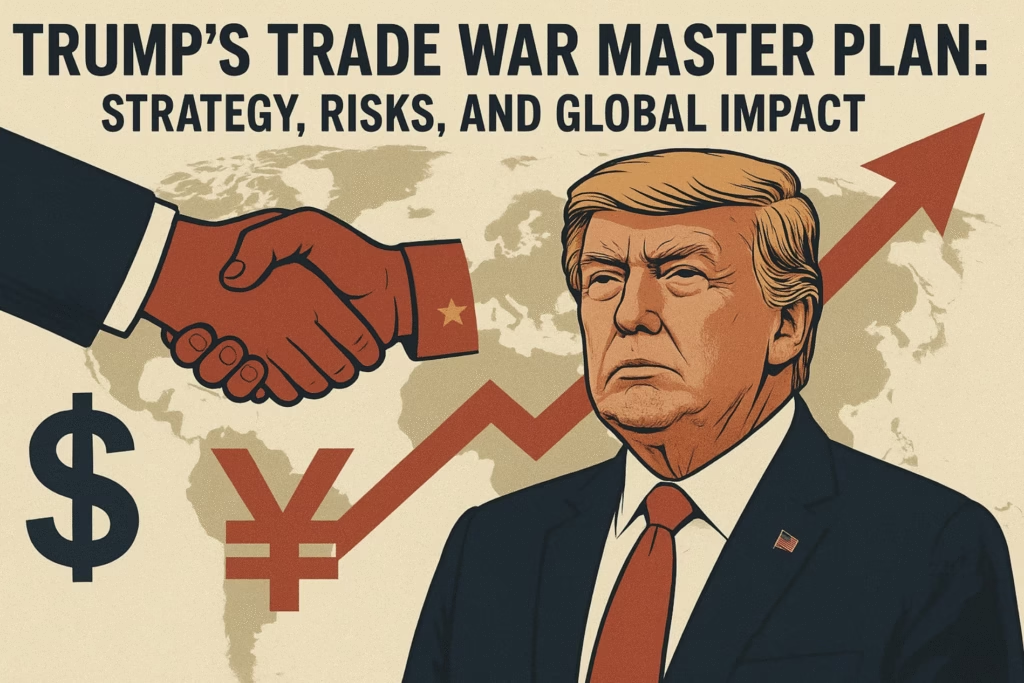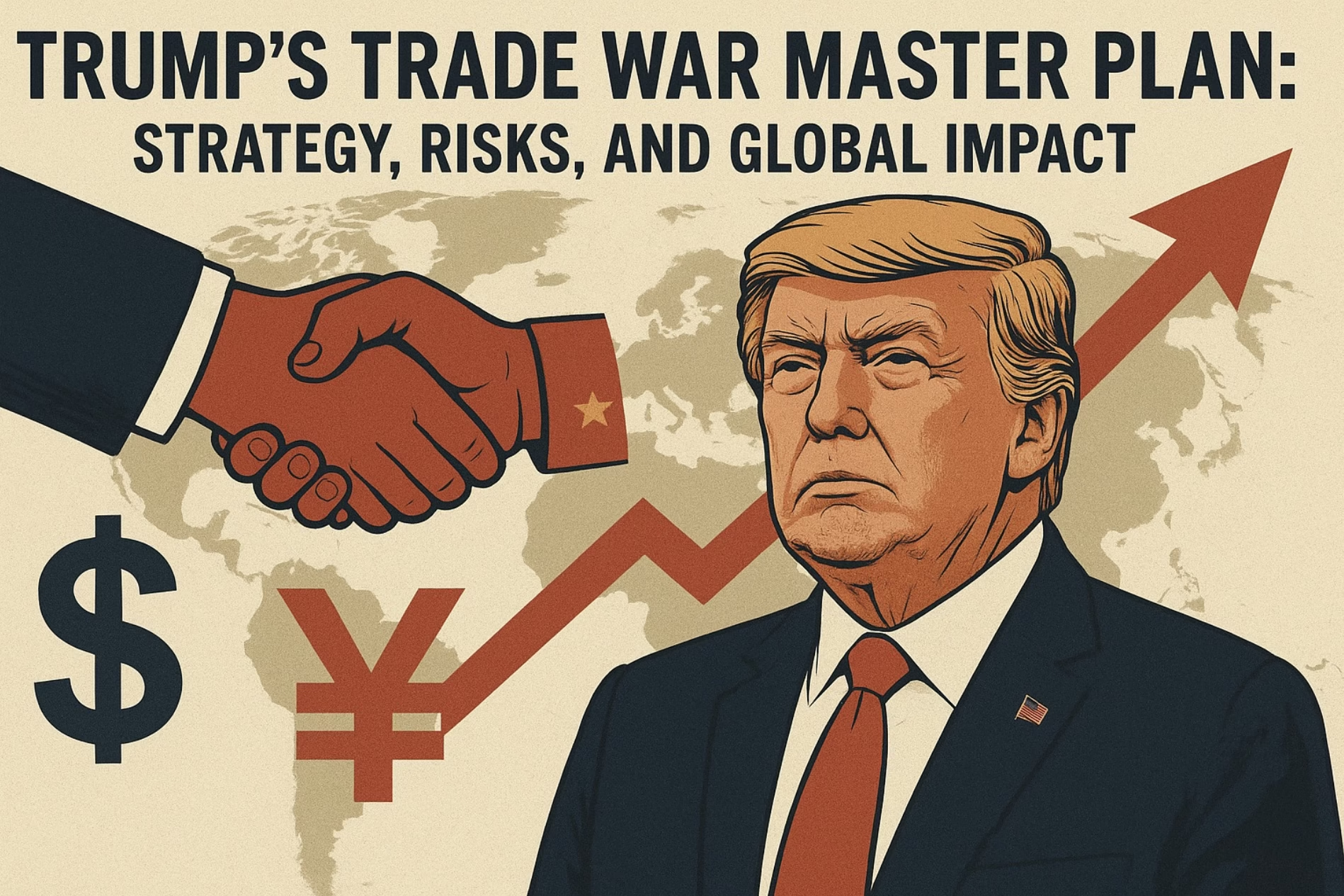Explore President Trump’s 2025 tariff strategy: why tariffs are being imposed on Canada, China, Mexico, and other nations; the impact on global trade, jobs, and inflation; reactions from world leaders; and how these moves affect the stock market. Discover the latest timeline and negotiation details.

Donald Trump has taken a bold approach to change the global economy. His plan is to rebalance the world economy by putting heavy pressure on friendly countries or enemy countries. The main tool of Donald Trump is tariffs — he is applying high tariffs on a country and pressurizing them to make big deals with America to make America great again.
Trump’s goal is to make America a global leader again, whether it means being aggressive or demanding.
The master plan of Donald Trump
Trump’s method is simple: put high tariffs on countries, then offer lower tariffs by making deals that benefit American business or the American economy.
Example: They put high tariffs on the EU — it may have faced 50% tariffs — but in the end, they mutually agreed to buy $750 billion worth of natural gas and invest $600 billion worth of investment over three years. In return, the US reduced the tariff to 15%. This tariff is still higher than the previous tariff of 4%.
Asian deals: Asian countries also promised the US to invest money in America. Japan is investing $50 billion, and South Korea $30 billion, both securing 15% tariffs. Even Malaysia agreed to invest $70 billion for an 18% tariff rate.
This approach is clever — taking money from other countries upfront. From the EU, Japan, and South Korea, these three nations are contributing $1.5 trillion. Southeast Asian countries are also contributing an additional $500 billion.
Why the superpower needs money?
The US is the superpower — why do they need money? These are the three reasons:
Creating jobs
Trump said foreign investment creates jobs in America. Each big deal adds at least 50,000 jobs. This job concern comes from the fact that China’s economy may cross the US economy in the future.
Changing trade patterns
Before 1970, the US was a net exporter country, but after 1971, when the gold standard ended and low tariffs were applied on other countries, the US became a net importer country. US companies established their factories in other countries and imported products to America. China’s entry into the WTO in 2001 made China a manufacturing hub. Trump wants to reverse this trend with higher tariffs and less dependence on China.
Securing political support in the future
When companies invest their money in the US, every time they are trying to protect the US economy. If in any case the US economy collapses, that will impact the investor countries as well.
Problem with this plan
Trump’s strategies have some weaknesses and some risks.
High labour cost
Making products in the US is expensive because US labour is expensive — they charge $35 per hour compared to Chinese workers who charge $4 per hour, and in Vietnam the number is as low as $1.8. If more products start to be manufactured in the US, then the prices of goods increase and it causes inflation.
China manufacturing hub
China is highly efficient, making it easy for businesses to get custom products quickly and cheaply. This makes China very hard to replace as the world’s main manufacturing centre.
Other countries are pushing back
Many countries are unhappy with Trump’s aggressive tariff policies.
Nuclear Powers: Countries like China, Russia, and India are not going to support the US in a conflict.
Resistance example: On India, Trump put a tariff of 25%, but after negotiations didn’t happen, he increased the tariff to 50%. Brazil’s President Lula even threatened America by saying they would stop trading with the US and work with India instead. If all of the BRICS countries push back, then Trump may have to take a step back.
India’s position
India retaliates to the US to show strength, not weakness. The US has always supported Pakistan in its old conflict with India, raising questions about how much India can rely on the US.
Instead of buying US weapons, India can start investing more money in Indian weapon manufacturing, build strong industries, and create value for the world like Pakistan is doing.
Today’s world is entering into Cold War 2, where battles are fought with technology, trade, and media instead of arms. India’s best defence is to make India great itself — too important to ignore.
Conclusion — big risks or big gains
Trump’s plan is bringing huge investments into the US, trying to secure its position as the global leader and make America great again. But at high costs — China’s dominance is continually increasing in manufacturing, and growing resistance from other countries could limit its success.
For countries like India, the lesson is clear: real power comes from economic independence and being indispensable on the world stage.
